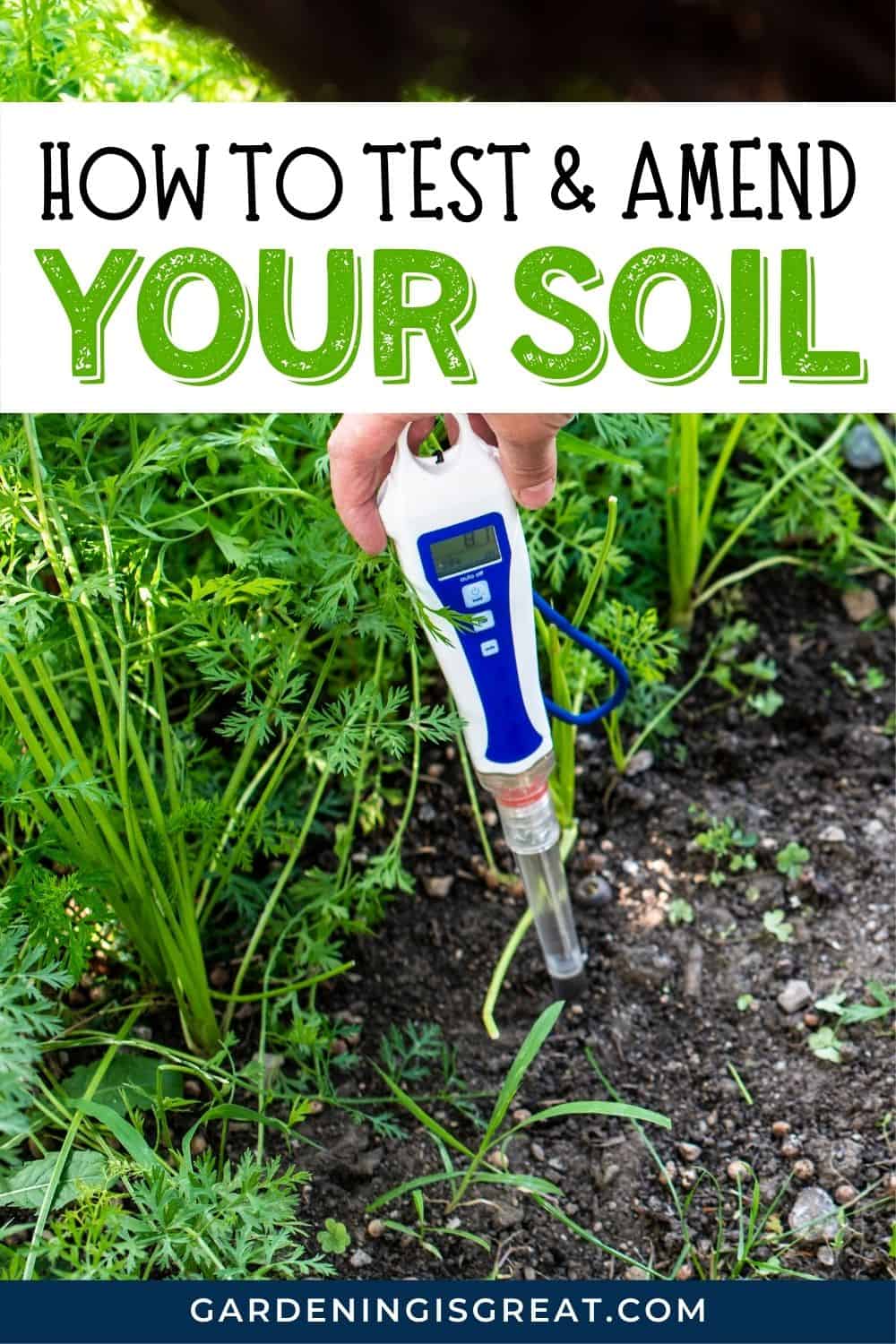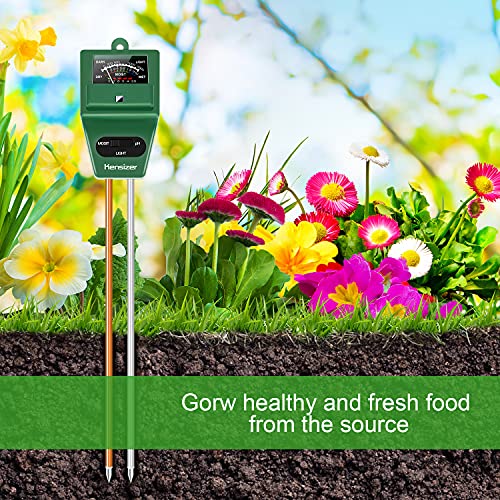How To Test And Amend Your Soil
Testing your soil is important to help your plants thrive. When your soil becomes imbalanced it is lacking the nutrition your plants need to grow.
Plants have a different range of acidity that they grow best in. When the soil is too alkaline or too acidic for your plants you will find that they have issues with stunted growth, disease, and are more likely to fall prey to pests.
If you are starting a new garden bed or your plants are showing signs of trouble you should check your soil and amend it to fix any issues so that your garden can reach its potential.

This post contains affiliate links that earn me a commission at no additional cost to you.
How to test your soil
Testing your soil at home is easy and can be done in a few simple ways. If you think back to your school years you will remember testing the acidity of different liquids using litmus paper or even red cabbage juice.
This same basic principle is how you test your soil. This will help you if your soil needs to be amended for the best results from your garden.
Test the acidity by hand
You can use test strips to check the acidity of your soil by hand relatively easily. Take a teaspoon sample of your soil and label the container so you know which garden bed it came from.
Gather all of your samples and add 1/4 cup water to the soil samples string and let sit until the soil settles back down.
Dip your test trips into the soil and compare the color they turn to the key provided on the package to determine if you need to adjust the soil to help your plants thrive.
Use a soil tester
Modern technology makes testing your soil easier than ever so even the worst black thumb can have a beautiful thriving garden. To use this tool, stick it into the soil you want to test and follow the manufacturer’s directions.
This will tell you the PH level of your soil and even let you know if your plants need more water or sunlight making this a great tool for year-round use if you tend to kill indoor plants.
If the PH of your soil is too low it is very acidic and you should work to reduce the acidity and add calcium to your soil. If the soil PH is high your plants need more acid to move nutrients and thrive.
How to raise the acidity of your soil
If your soil does not have enough acid the plants cannot absorb the nutrients they need to thrive. This can leave your plants weak, make them most susceptible to disease and mold issues, and even kill them off.
All plants need some amount of acid but tomatoes and blueberries do best in soil that is more acidic. Here are a few ways to raise the acidity of your soil.
Add rich fresh compost. Fresh compost is very rich and tends to have higher levels of nitrogen than more aged compost does. This will help increase the acidity of soil that just needs a small boost including at the beginning of the season.
Mulch with pine needles. Using pine needles in your garden around plants like your blueberries is a great way to ensure that they always have enough acid to grow. The pine needles will break down over time helping to stabilize your soil acidity levels.
Add sulfur to your soil. Sprinkling sulfur on top of and then watering your soil is a great way to raise the acidity quickly. You can also opt to mix it directly in at the beginning of the season.
Sprinkle coffee grounds. A great way to increase the acidity in your soil and to reduce waste is to take your used coffee grounds and place them in your garden to ease the acidity and nourish your plants.
How to reduce the acidity of your soil
If your soil is too acidic it can quickly kill off your plants. While acid is vital to transfer nutrients to your plants, if there is too much acid and nothing else your plants need they will be susceptible to disease, stunted growth, or even die.
There are a few things you can do to lower the acidity of your soil and help your plants grow tall and strong.
Add lime. Adding lime to your soil is one of the fastest ways to lower the acidity of your soil and provide your plants with much-needed calcium. This can be mixed into your soil before planting or sprinkled on top of the soil allowing water to carry the finely ground particles into the soil and into your plants.
Wood ash. If you have a wood-burning stove or a fire pit that you only burn real wood in you can take advantage of this to use the wood ash for raising your soil’s PH level. This takes a while to take effect making it a great long-term solution for your garden that helps to reduce waste by making use of something you would normally throw away
Crushed eggshells. Whether adding to your compost to help improve it, breaking it into chunks to get rid of slugs and snails in your garden, or powdering it to raise the calcium levels in your soil, eggshells are a useful addition to your garden. These do take time to break down but will do so much faster if you roast them in the oven then powder them in your coffee grinder.
Powdered milk. A great quick and easy option to lower the acidity of your soil is to grab some powdered milk from the grocery store and sprinkle it in your garden. When you want your garden after it will mix with the water and absorb into the soil quickly where your plants can put them to work. Avoid using spoiled milk from your refrigerator. While this is great for adding calcium to your garden it tends to be a bit more acidic and can end up raising the acidity of your garden soil.




